Do you doodle while held captive by a long wait, work meeting, or school lecture? As a neuroscientist, I’ve spent countless hours looking through a microscope at brain and spinal cord tissue samples of the nervous system. What I see through the lens has not only informed my research, but has also shaped my creative preferences for what I find interesting and elegant in nature. There is a simple complexity to the structure of neurons with their seemingly random branch patterns. But, in my mind, there is a reason and purpose for this beauty. You see the “branch” motif in microscopic cells, trees, lightning flashes, and cracks in road asphalt.
In this article, I share some doodles of neurons using different mediums and a few deeper thoughts I had while making them.
It looks many years of staring at blank white walls to put all this together. Umm…they didn’t have padding or anything. Lots and lots of meditative introspection and blank white pages that I eventually filled with scribbled notes. Here’s what I got! Discovered?
The secret of complexity
The Cambridge dictionary defines complexity as “the state of having many parts and being difficult to understand and find an answer to” (source). Sounds about right? The natural World is full of hidden secrets.

Much of the effort a scientist exerts is invested in reducing complex ideas into simple parts. In other words, a lot of work goes into deconstructing the simple things we see in the world into its smaller pieces to study the big picture.
Take for example, a cheeseburger.
READ MORE: DISCOVER MINIATURE PAINTING COMPLEXITY WITH SIMPLICITY: A PHILOSOPHY
If you wanted to study the cheeseburger as an empiricist, you need to understand the physical parts that make up the cheeseburger. To do this properly, you have to remove the bread, meat, and cheese and study each part separately. After you do that, you can put it all back together and see how each piece affects the others.
How does the cheese influence the look, taste, and feel of the meat?
You’re thinking this is a lot of work and energy. And, it is! And, of course, why would you invest all this effort anyway?
Well, in scientific circles and beyond, the most argued points and usually the most interesting answers come from the “why” type questions.
The answers to why questions are usually based on opinion with very little way to “prove” using physical, repeated observation.
Ultimately, I would say that complexity is a human construct (a perception) that we create for things we don’t understand.
Nature is “simple”, because it has purpose
From my (our) vantage point, everything in nature appears complex. Clouds, trees, weather patterns, human behavior, etc., are all a part of this interconnected web. But, despite all of the interactions, ups and downs, the physical rules that govern things, there is something simple about it all.
Sure, we can cue the Star Wars reference of the Force with a capital “F”.

Dig deep. Why do so many people enjoy seeing, walking through, and being in Nature? Despite the ease of modern, civilized living, with its electronic machines and faux social interaction, easy food and entertainment, we long for simplicity.
Nature must make sense.
Life is complicated because we add things to it that don’t matter in the long run. Whether added life complexity is a choice or not is a different issue altogether.
I want to avoid the cliche of being that guy telling you “how to live the best life”. Instead I’d argue the universal point that people want things to make sense.
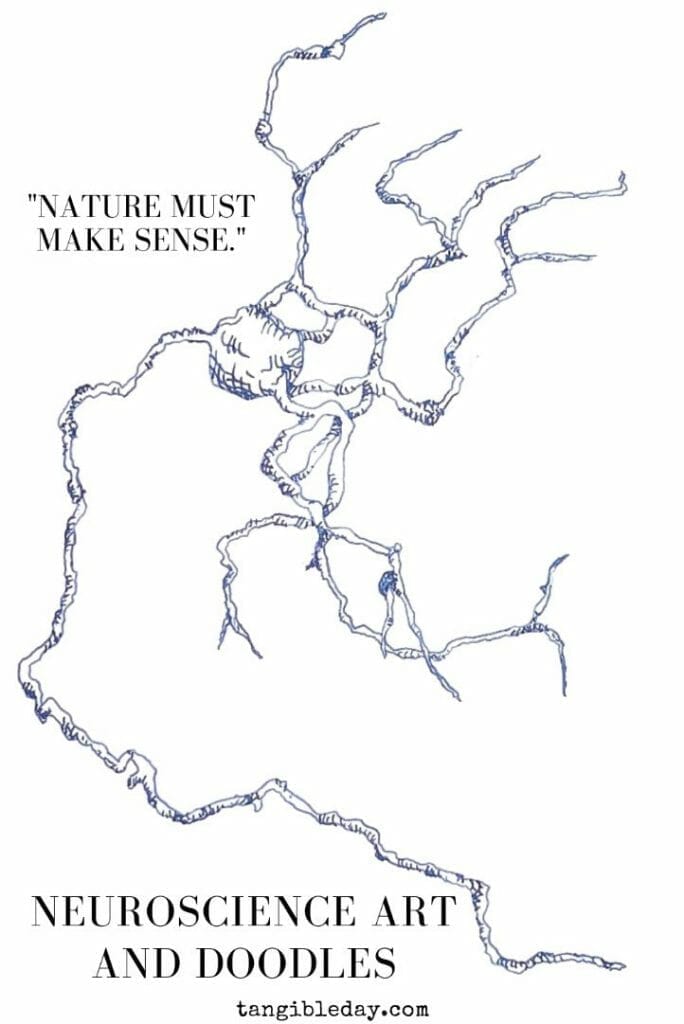
Everything in Nature seems to make sense.
Nature must make sense.
And, this statement must be an absolute truth. Even if we don’t understand nature, it must make logical sense.
And, there are a ton of reasons for supporting this axiom.
If nature didn’t make sense, then I couldn’t study it as a scientist. No experiment would work. Every study design would fail to produce an interpretable result. If the thing I’m studying had no internal logic, then I could not make any logical conclusion.
Math wouldn’t exist, if the concept of Zero (none) and numbers weren’t real things you could rely on.
Logic builds upon prior logic.
Nature is simple, despite its appearance of complexity because it has a built-in, baked-in logical purpose and design. Nature works. Maybe, you think it doesn’t work great, e.g., people get sick and die, but this is merely a human interpretation of what is bad and good.
Nature is heartless and cold
Let’s not get ahead of ourselves. Despite the seeming purpose and elegant simplicity underlying natural wonders and workings, we live in a physical world that has no feelings.
Your feelings don’t matter in the physical scheme of things.
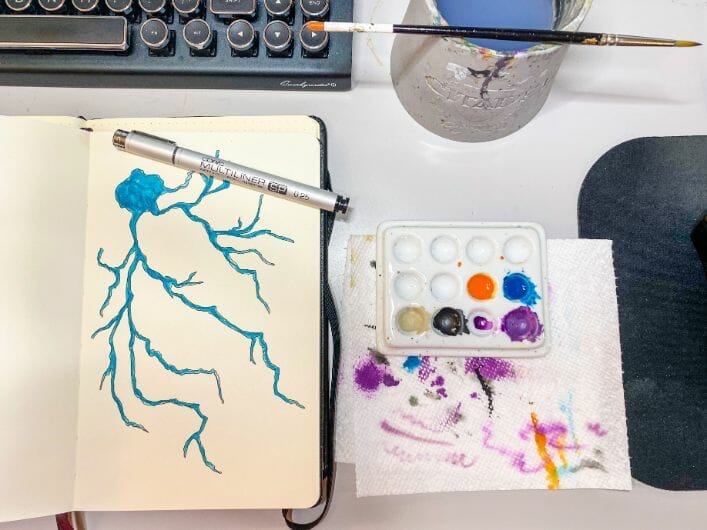
Just because you feel like you could fly, doesn’t mean gravity won’t kill you if you jumped off a cliff. We can’t break the rules of how things work, even if we tried… in this World, we have to work within the rules and use them to our advantage.
Scientific discovery gives us the information to work within the rules, find the gaps, and manipulate the “parts” to help us do whatever we want to do. In other words, science isn’t about making rules or breaking them. Science is about finding the edges so we can peel up the thin veil and peek behind the curtain.
What pulls the strings on this Shakespearean stage?

Why doodle neurons?
Oh, it’s the “why” question! My favorite.
Well, here’s why I think neurons are fascinating. Neurons are the cells that transfer information from one part of your body to another. They are also part of the wiring that make up the computational aspects of our bodies. They help process the raw information and turn it into something useful.
As biological wires, neuron structure sub-serves function. Under a microscope, although the structure of neuron appears complex, I see neuron morphology as a peek behind the curtain.
The fanciful branches and twists of neurons are the strings that pull on the thoughts and heart of human existence.
When I’m doodling and drawing neurons, or peering at them through a microscope, I may often feel the same sense of awe that one might have when watching a sunset at an ocean’s edge.
Unknown, mysterious, and wholly beautiful. I have no idea what I’m looking at, but I know I like it.
Is there something in your life that makes you feel this way? Is it art? Is it watching your children grow up?
I suppose I like drawing and doodling neurons because I’m re-creating that sense of awe, line by line (or brushstroke).
Whatever the reason, neurons are cool.
How do you doodle neurons?
It’s easy! Start simple. Then, make it complex.
The great thing about the neuronal branching motif is that the randomness works to your advantage. Start with the cell body, which has no true form other than this is the starting place for all the branching projections.
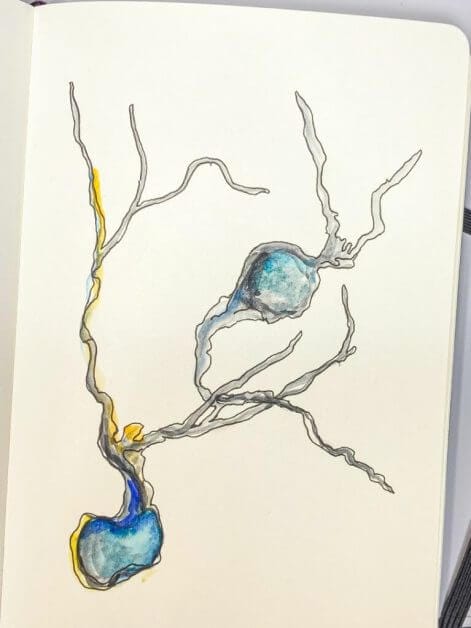
If you need inspiration or ideas, then go outside and look at trees. Look at how their branches extend from a singular trunk from the ground. They go up from the roots up into a thicker portion and thin out as they extend to the sky.
This conceptual resemblance is mirrored in many neuron types of the body. You can also see other examples of my doodles here.
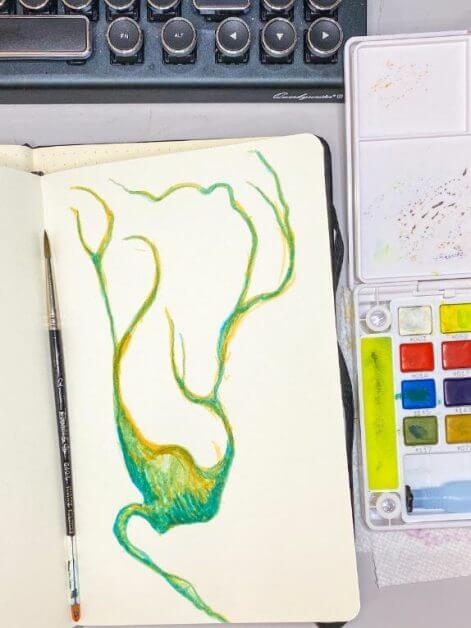

For techniques and media, you can use anything! Pens, pencils, paint, and more.
I love this tutorial video for rendering neurons quickly and convincingly.

The key I think to making art that you love is to play and experiment. Just do it. Here are the result of a few of my neuron doodling experiments that I like using the ink and splatter technique. Although I did cheat a little and used my Patriot 105 airbrush (with no paint in it) to provide the air. Remember, to use good light if you can.
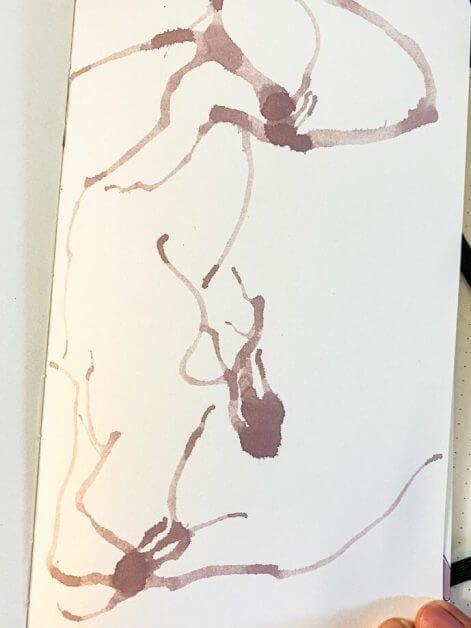
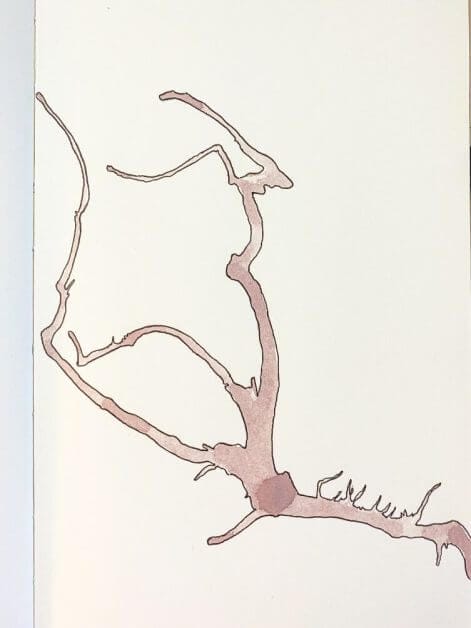
Final Word
The next time you have 5-10 minutes on your hands, instead of checking your last social media message/post, go make something. Doodle, create. There’s something special about using your hands to make your thoughts (even if they are unconscious) into something real or tangible.
Are you drawn to particular things in Nature? Shapes or ideas? Recreate them on paper or whatever media you prefer. As I see my kids grow up, one of the things they all love to do is draw and sketch things they see.
Then, they tell stories about what they made. Each piece of “Art” they create has a meaning and story behind it. Part of the thrill is in the re-telling.
As adults, perhaps we regain some of that magic when we engage with Creation.
Thank you for reading!


Tangible Day on YouTube (Miniatures and More!)

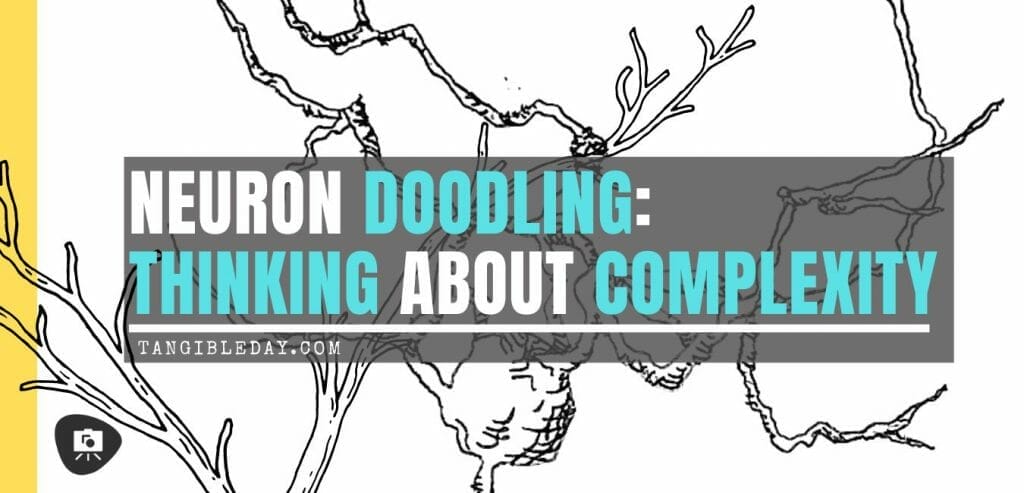
I doodle bicycles or complex swirly patterns.
Just chilling like me 😀
Pingback: Lemon Fizz - Stoned Human Theory